Waterfall Pumps
Waterfalls are not only a beautiful way to help circulate the water; they help oxygenate the water as well. Waterfalls look and sound beautiful too! The heart of a waterfall is the waterfall pump. It’s essential for moving substantial amounts of water through a length of tubing and up to the spillway to create your desired flow display.
About Our Waterfall Pump Selection
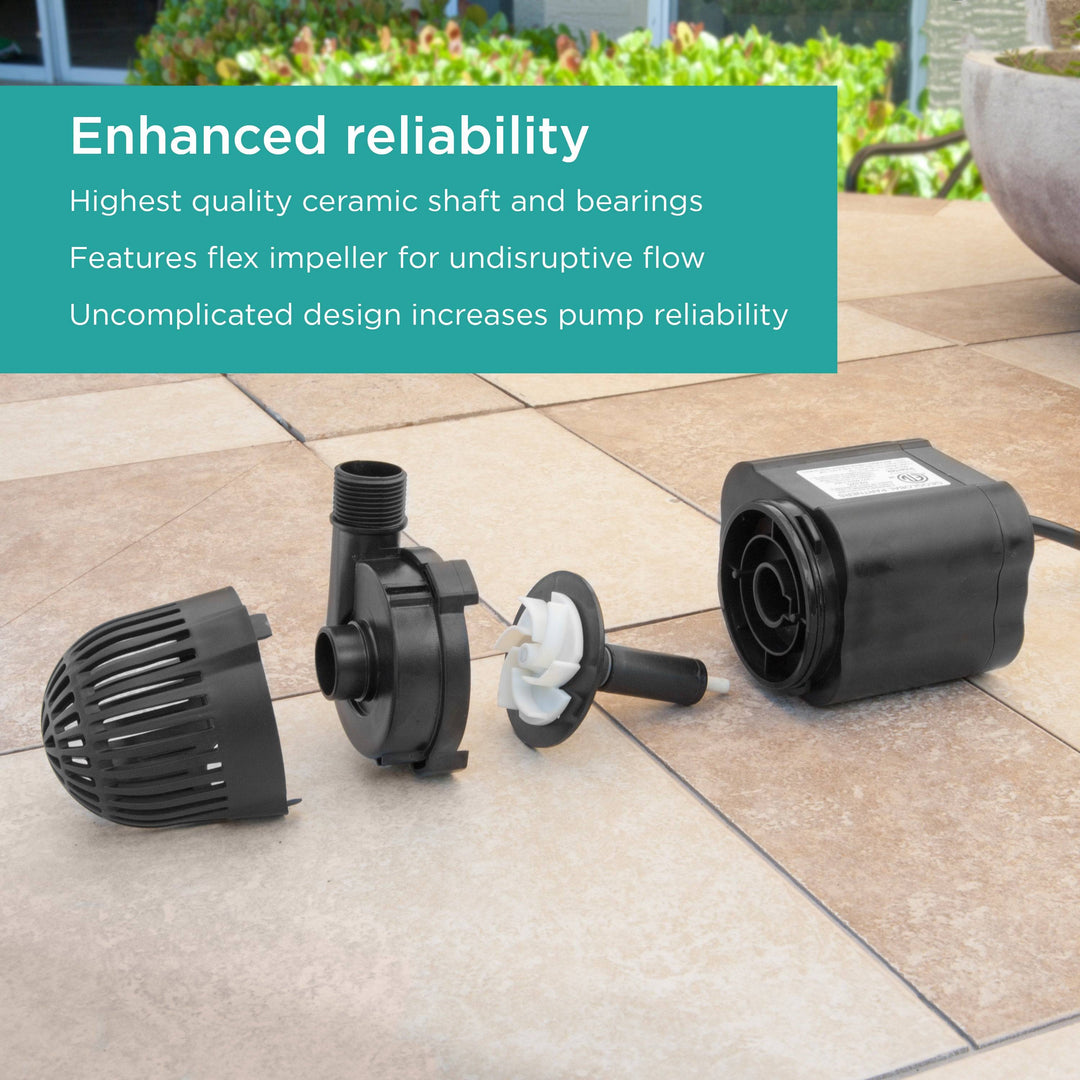
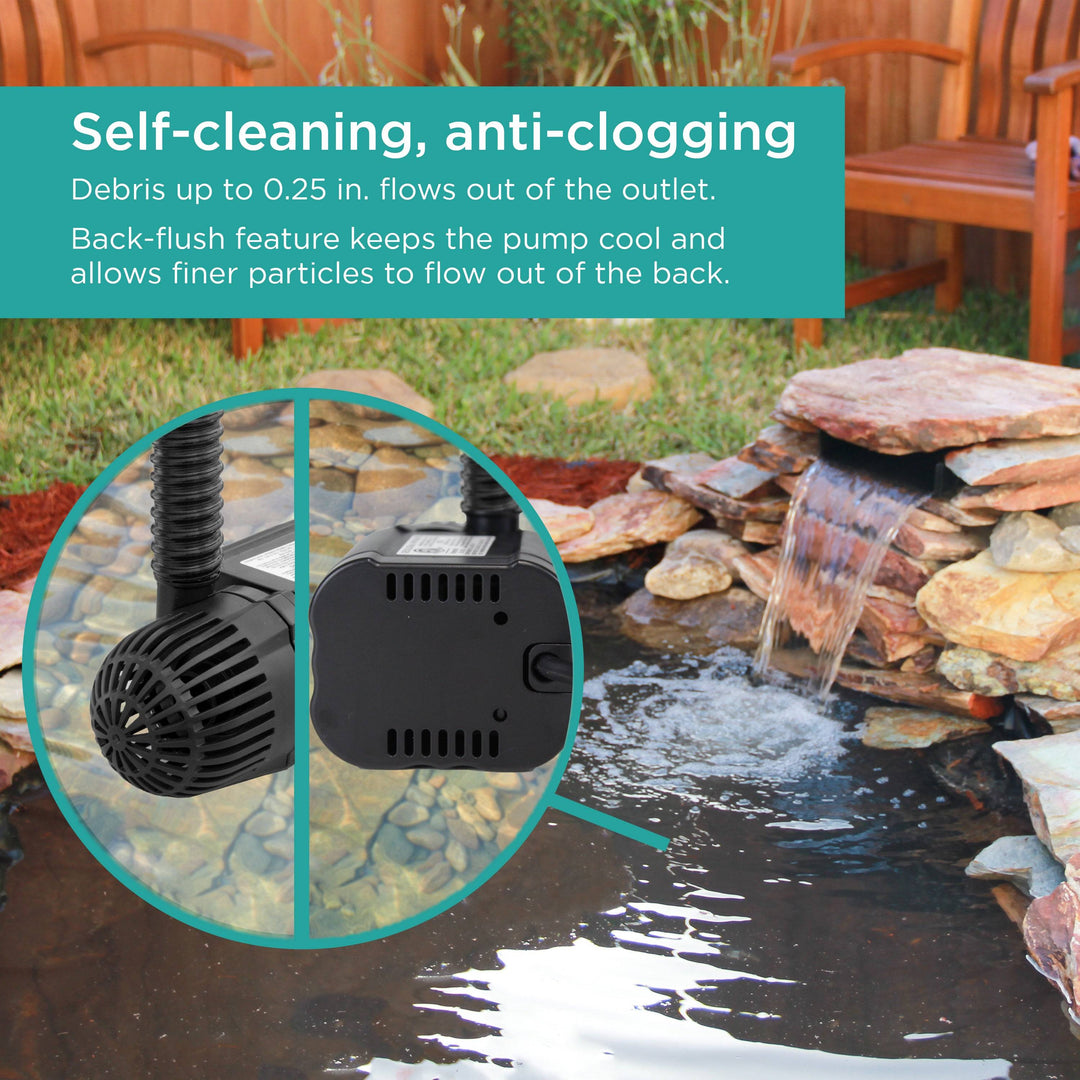
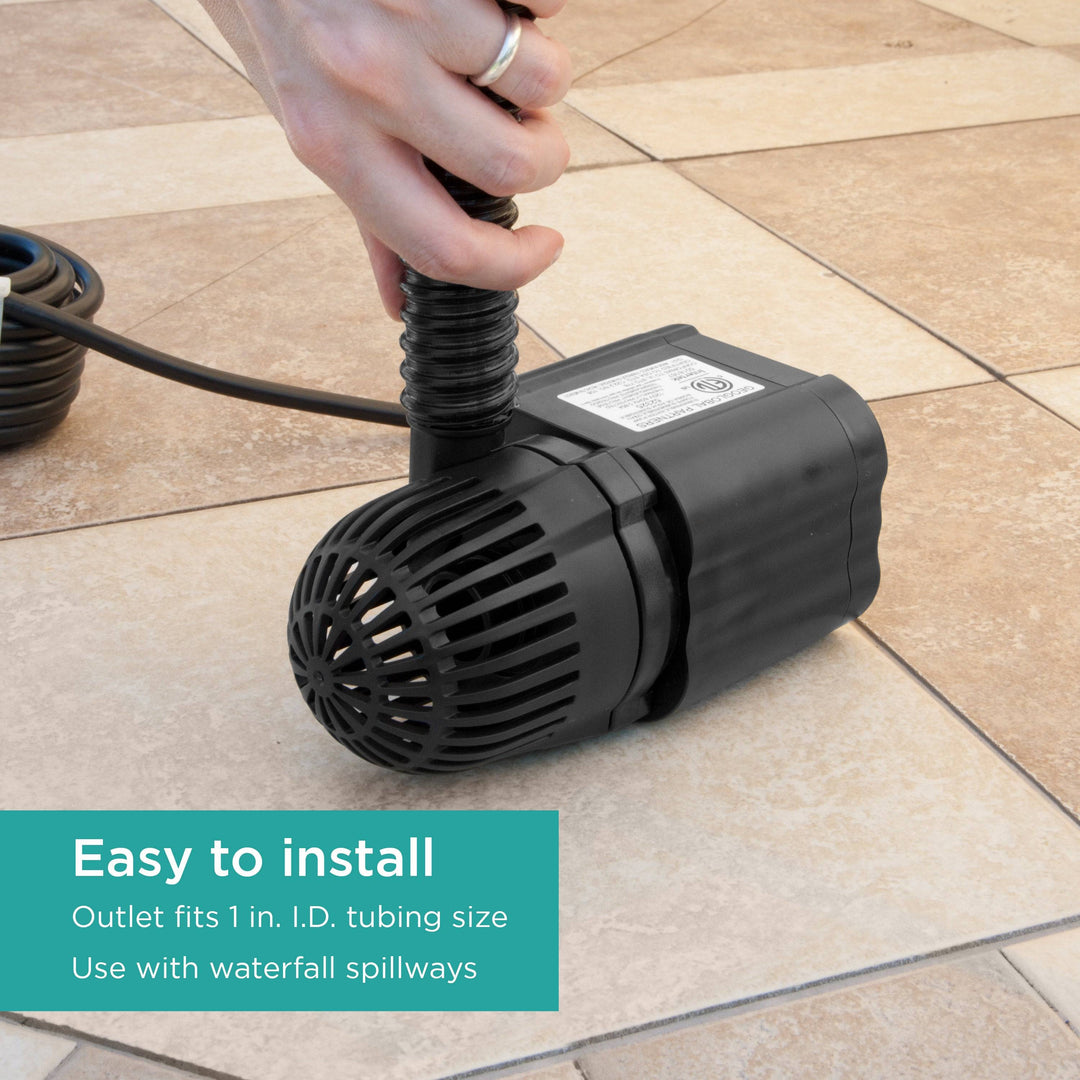
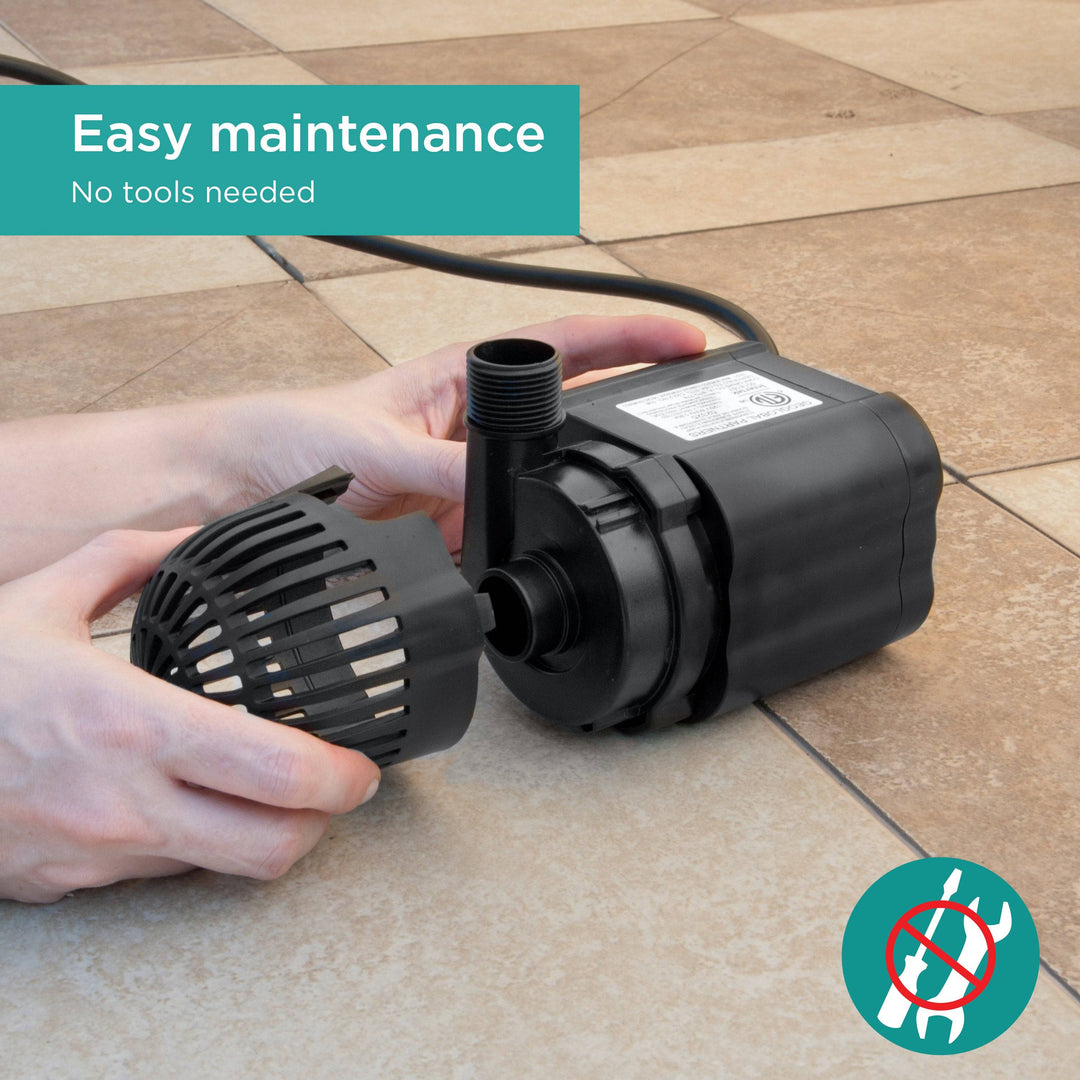
Selecting a TotalPond Waterfall Pump
Figuring out the correct pump size you need is worth the time and effort. If the pump is too small, there may be no waterfall because the pump wasn’t strong enough. If the pump is too large, there may be too much pressure for the size of the waterfall and water will gush over the sides instead of out of the spillway, creating a mess.
Determining the flow and lift needed is a two-phase formula.
To determine the flow, use this rule of thumb. For every 1 in. of spillway width, you need 100 GPH (gallons per hour) flow to achieve a “sheet” look. Divide by two for a “trickle” look. Multiply by two for a “Niagara” look.
TIP! Check the pump’s specifications for the ideal pumping height at the head of your waterfall.
TIP! Excessive bending or the addition of in-line filters will reduce the flow.
To determine at what height (or lift) you need that flow, factor in the length the pump will need to push water.
- Measure the distance the pump will be in your pond up to the waterfall spillway. This measurement is your length and also the length of tubing needed. For every 10 ft. in horizontal length, add one foot of lift to your calculation.
- Measure the height from the TOP of the pond water (don't measure the depth of the pond, only from the surface of the pond) to the top of the waterfall spillway. For every foot of height, the water must be pushed from the top of the pond water, we calculate one foot of height.
- Add up the heights (or lifts).
Example: The pump is 30 ft. from the spillway, so we divide 30 ft. of horizontal length by 10 ft. to get 3 ft. of lift. Your waterfall spillway is 4 ft. from the top of the pond water. So, 3 ft. lift in length plus 4 ft. lift in height gives us a total of 7 ft. of lift.
IMPORTANT! When shopping for a waterfall pump, look at the specifications chart on the packaging to determine what flow that pump will create at different lifts. In our case, you don’t want to look for packaging that says it's a 5000 GPH pump because this number is most likely at 0 ft. lift or 1 ft. lift – not the 6 ft. lift you need (according to the example). It might be only 1000 GPH or 2000 GPH at that height. The specs chart will help to confirm.
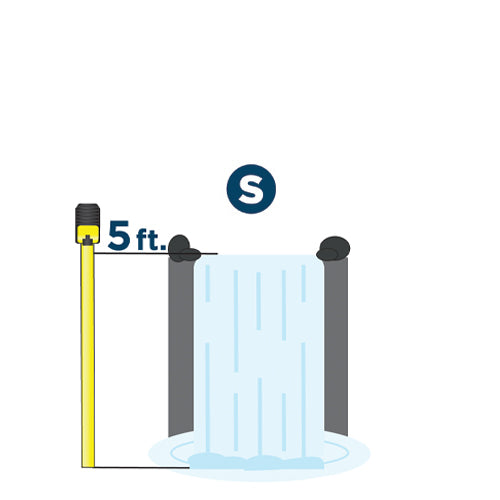
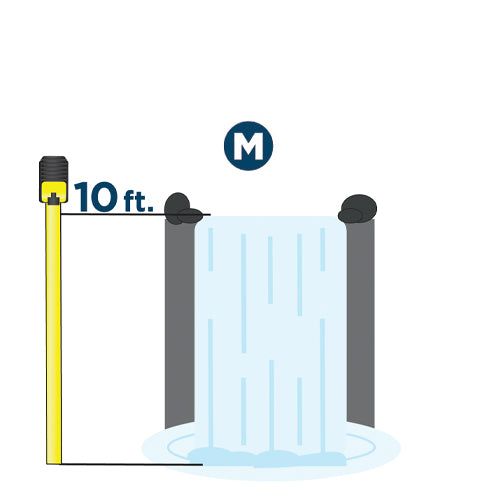
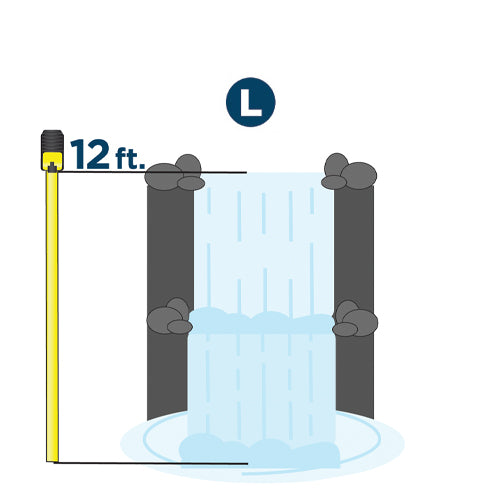
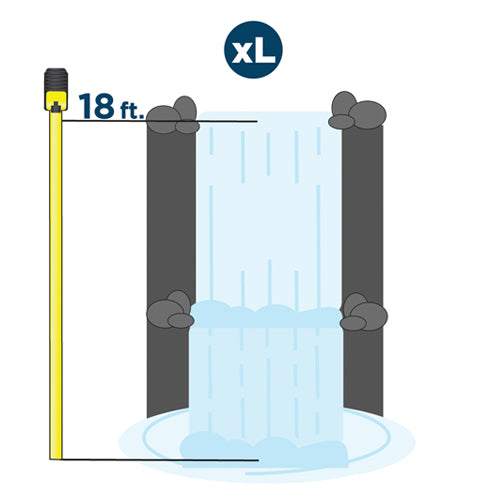
| Waterfall Size | Ideal Waterfall Height | Recommended Pump | Pump Dimensions |
| Small | 5 ft. | 1,200 GPH Waterfall Pump | 6.8 x 3.94 x 4.17 in. |
| Medium | 10 ft. | 2,000 GPH Waterfall Pump | 7.4 x 3.9 x 4.17 in. |
| Large | 12 ft. | 3,600 GPH Waterfall Pump | 10.5 x 4.9 x 6 in. |
| Extra-Large | 18 ft. | 5,100 GPH Waterfall Pump | 10.5 x 4.9 x 6 in. |
Tubing
Tubing is a conduit, allowing water to flow from a pump to the rest of your pond equipment.
Tubing-to-Pump Compatibility Chart
| 1,200 GPH Waterfall Pump | 2,000 GPH Waterfall Pump | 3,600 GPH Waterfall Pump | 5,100 GPH Waterfall Pump | |
Use with |
1 in. Corrugated Tubing |
1 in. and 1.5 in. Corrugated Tubing |
1.5 in. and 2 in. Corrugated Tubing |
|
TIP! For a gentler flow, choose the largest tubing size recommended for the waterfall pump. For a faster flow, use the smaller size recommended for the waterfall pump.





